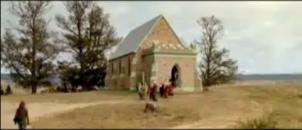 1925703815652610203.jpg
1925703815652610203.jpg
 1925703815652610203.jpg
1925703815652610203.jpg
'The story of a murder and a marriage. A powerful and original film about the things that haunt us.'
Source: Screen Australia. (Sighted: 2/8/2013)
As Nathanael O'Reilly points out in 'Joining the Dots: Paul Kelly Sings About Place', there is a complex inter-relationship between American writer Raymond Carver, this film, and musician Paul Kelly.
Raymond Carver's short story 'So Much Water So Close to Home' appeared in 1977 as part of the collection Furious Seasons.
In 1989 (a year after Carver's death), Paul Kelly (then working as Paul Kelly and the Messengers) released the album So Much Water So Close to Home, which took its title from Carver's short story. The album included the song 'Everything's Turning to White', which was explicitly based on 'So Much Water So Close to Home'.
In 2006, Paul Kelly co-wrote the score for Jindabyne, which is an adaptation of Carver's story.
'The Australian film Jindabyne (dir. Ray Lawrence, 2006) opens with a blurry shot of dry grasslands and a string of barbed wire in sharp focus horizontally across the screen (Fig. 1). The shot runs for 32 seconds before the camera tilts up, bringing into focus both the grassland and a cluster of huge boulders on a hill in the background – all in one take, no cut. Next the camera shows a pick-up truck, motor idling, with an older non-Aboriginal man behind the wheel hiding behind the rocks – the murderer of an Aboriginal woman, as we will learn later – followed by an extreme high angle long shot of the dry landscape below the hill where a car is approaching. Shots inside the car present a young Aboriginal woman, happily driving, while intercutting shows the man leaving his hide-out to intercept her.' (Introduction)